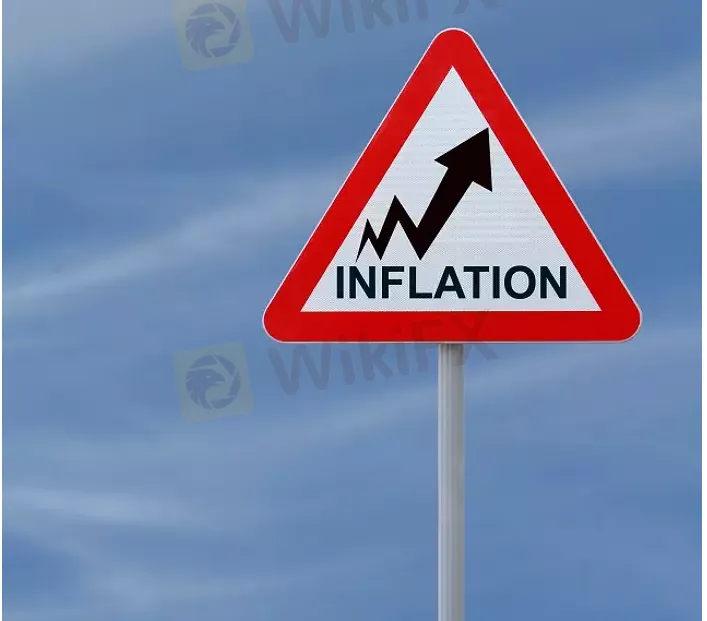简体中文
繁體中文
English
Pусский
日本語
ภาษาไทย
Tiếng Việt
Bahasa Indonesia
Español
हिन्दी
Filippiiniläinen
Français
Deutsch
Português
Türkçe
한국어
العربية
Price Inflation: Definition, Measures, Types and Pros and Cons
Abstract:The simple definition is a general rise in prices. The classic definition is ‘too much money chasing too few goods.’

Inflation news has been dominating the headlines for several months as the global economy begins to slowly reopen following the more than year-long pandemic. The rapid rise in prices has become a top concern as central bankers, consumers and investors fret about the rising cost of groceries, housing, gasoline, and other living expenses. The most immediate way inflation is felt by consumers is the negative effect on purchasing power and quality of life.
What is Inflation?
The simple definition is a general rise in prices. The classic definition is “too much money chasing too few goods.” The price of individual items fluctuates all the time so it takes a collection of items rising at the same time to drive the inflation meter higher.
How is Inflation Measured?
Probably the best-known measure of inflation in the U.S. is the Consumer Price Index (CPI), which measures the average change in prices paid by urban consumers for things like food, clothes, housing, and transportation. The Federal Reserve measures inflation by the personal consumption expenditure (PCE) price index. While CPI looks at what people are buying, PCE looks at what businesses are selling.
Core inflation is another term that is tossed around quite often. It takes into consideration all inflation minus food and energy, which tend to be volatile. They can be influenced by oil supply and weather, and since the events can be deemed as short-term, their numbers are stripped out of the total inflation picture.
Cost-Push Inflation vs. Demand-Pull Inflation: Whats the Difference?
Cost-push inflation is not that common. It starts with a decrease in total supply or an increase in the cost of that supply. Suppliers raise prices because they know consumers will pay it.
Demand-pull inflation exists when aggregate demand for a good or service outstrips aggregate supply. It begins with an increase in consumer demand. Sellers meet such an increase with more supply. But when additional supply is unavailable, sellers raise their prices. (Learn more about cost-push and demand-pull inflation here.)
Why Should I Care About Inflation? (Pros and Cons)
It‘s the Fed’s job to calm people‘s nerves over inflation. Generally speaking, consumers don’t worry about inflation being too low.
Throughout April and May 2020 at the start of the pandemic when prices were plunging, consumers werent fretting over low food and gasoline prices. They were focused on avoiding coronavirus. While quarantined, and with the economy on lockdown, fewer people were driving and gasoline and crude oil prices fell sharply.
Now that most of the lockdowns have ended, more people are working and individuals are driving and flying. This is driving up gasoline and crude oil prices. In other words, prices are reflating from extremely low levels in early 2020 to higher prices in the Spring/Summer of 2021.
Historically low-interest rates are also helping to drive inflation higher. When the economy was stable in early 2020 before the pandemic, mortgage rates were relatively stable but higher than they are at this time. When the Fed slashed its benchmark rates, mortgage rates fell sharply. Low mortgage rates are one of the factors driving up demand for housing.
Demand for housing is increasing, but the supply of available homes to buy is low so people are building new houses. After a sluggish 2020 drove down demand for building materials such as copper and lumber, the current surge in home building is driving up demand for these materials. The increase in prices is another contributing factor to a rapid rise in inflation.
The Fed sees the rise in gasoline, copper, and lumber prices as a temporary reaction to the reopening of the economy. They dont see the rise in prices as here to stay. Policymakers can explain away the jump in prices as economic growth. They feel they have the measures to combat inflation, but they also run the risk of stopping growth too fast.

Disclaimer:
The views in this article only represent the author's personal views, and do not constitute investment advice on this platform. This platform does not guarantee the accuracy, completeness and timeliness of the information in the article, and will not be liable for any loss caused by the use of or reliance on the information in the article.
Read more

Axi Reveals Game-Changing Edge Score Tool to Elevate Traders
Axi launches the Edge Score Explainer, a tool providing traders with real-time insights, personalized metrics, and actionable data to enhance trading performance.

High Risk, High Returns: Is This True?
Leverage is one of the most talked-about tools in trading. It promises big returns but comes with huge risks. Traders often wonder if leverage is a blessing or a curse. There are arguments on both sides. Some traders believe it is a game-changer. Others think it can ruin your account. What is your take on this?

FCA Plans to Transform Financial Regulations in the UK
The Financial Conduct Authority (FCA) has revealed plans to reform its regulatory framework to support economic growth in the United Kingdom.

Is eToro Leaving London to Focus on a $5B U.S. IPO in 2025?
eToro plans a $5B U.S. IPO in 2025, shifting focus from London to the U.S. market. Discover details on eToro's valuation, SEC filing, and future in fintech.
WikiFX Broker
Latest News
IG Japan Extends US Stock CFD Trading Hours in 2025
ALERT! Warning against Livaxxen
Which Zodiac Sign Makes the Best Trader?
Plus500 Collaborates with Topstep, Prop firm
Robinhood Launches Crypto Trading Services in Spain
Archax Secures FCA Approval to Oversee Crypto Promotions in the UK
CLS Global Admits to Crypto Fraud
Philippine SEC Urges Caution Regarding Ecomamoni
Become Women Brand Ambassador of Yamarkets
Naira Falls Against Dollar as Nigeria Reshapes Economic Blueprint
Currency Calculator


